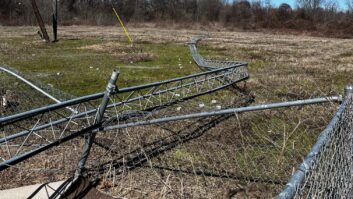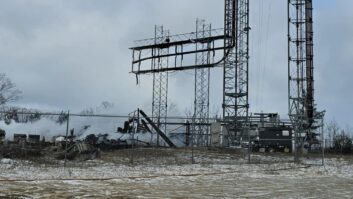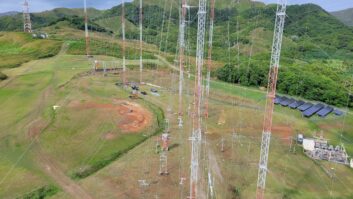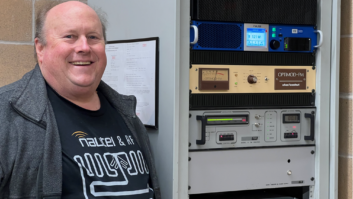In the first three installments of this series, we discussed whether or not an old transmitter was even worth fixing, followed by some techniques I�ve used to repair high-voltage power supplies, followed by analysis and repair of control circuitry. We�ve worked our way up to the RF amplifier deck. Now, start by working on the input circuit.
At this point, you should be reasonably certain the power supplies are functioning correctly, and that the control circuitry is functioning correctly. However, you won�t be 100 percent sure until you�re able to check all of the transmitter�s functionality, at the nominal power expected.
DESIGN CONSIDERATIONS
Likely you know that the vacuum tube amplifier stage has fairly high input impedance; but because the transmitter input standard is 50 ohms, an impedance matching network is necessitated in the design. The circuit is frequency-dependent as well. Its job is to take RF power coming in from a 50-ohm source and generate a much higher peak-to-peak voltage on its output, connected to the control grid, so that plate current is pulsed at carrier frequency. So in trying to resurrect the input circuit of an old tube transmitter, we need to be certain the following conditions are indicated or met:
Control grid bias power supply has the correct voltage.
RF is being coupled all the way through the input matching network. This is indicated by control grid current in the transmitter metering.
The reflected power, back to the driving source (your exciter), is not too high.
BIAS POWER SUPPLY
Review the control grid bias power supply function again. This voltage biases the tube at cutoff or beyond, so that the static plate current drawn, with no RF drive, is low. There might be a variable resistor in the circuit to set that voltage: See factory test data, or circuit description, to determine the correct voltage.
Setting it too high (too negative) will require more drive from the exciter; setting it too low (not negative enough) will allow more static plate current, thus lowering the overall efficiency. There will likely be part of the control circuitry that tests for the presence of this power supply.
The final amplifier input section (below the tube socket) should be clean and inspected for loose or broken parts as part of the rebuild process. INPUT MATCHING NETWORK

An unfortunate reality in the use of vacuum tubes is that, right from the factory, they are not all exactly the same. The inter-grid capacitances will be slightly different from tube-to-tube.
Additionally, when you consider the manufacturing process, each transmitter needs to be built to work anywhere from 88 to 108 MHz. As I mentioned, the input matching network is frequency-dependent and needs to be tuned to the transmitter frequency; thus, the transmitter design calls for elements that provide for tuning: Variable capacitors, variable inductors, or both.
It�s also very important to realize that these parts might be slightly different from one another, depending on what part of the FM band the transmitter was ordered at originally. If you need to change frequencies on this old transmitter, you�ll need to be certain that the input network components will work for the part of the FM band to which you�re moving. If you are moving a transmitter to 88.5 MHz, as an example, from its original frequency of 107.1 MHz, it might not work without key components in the input circuit being replaced. There again, you�ll need the manual so that you can check this.
During its former life, this transmitter had thousands and thousands of hours with air blowing against these input circuit components. Naturally, they accumulated dirt. The first thing you should do as part of the RF deck project is to very carefully clean and inspect the components, looking for obvious problems like failed (and broken) components. After that, make sure the front-panel controls actually work: when you crank input tuning and/or loading controls, see that the associated components in the input circuit are actually moving, and in both directions.
Assuming all of the componentry looks normal, when you energize the plate circuit of this transmitter, you should be able to �peak� the grid current, using the input tuning and/or loading controls. At the same time the load that this input circuit presents to the driving source should be close enough to 50 ohms that the source can actually operate.
REFLECTED POWER FROM INPUT CIRCUIT
Aside from providing the correct peak-to-peak voltage necessary to drive the input (control grid) circuit, the input matching network must �match� that impedance back to something that looks reasonably like 50 ohms to your exciter.
All RF gasketing should be clean and in place. More next month. If not, your exciter�s reflected power metering and control will likely either shut it off, or at minimum, ramp its power back. When this happens you lose drive to the transmitter itself. When tuning the input circuit, do your best to find the point at which drive is maximized and reflected power back at the exciter is minimized. It would be ideal if the two occurred at the same exact spot in the tuning settings � but my experience is that this never happens. A compromise between the two is always in order, but I always give precedence to grid drive.

Another common problem is associated with the warm-up period of the tube. It presents a different impedance to the output of the matching network as it warms up, finally settling in after a certain amount of time. While this is happening, the matching network presents a different load impedance to the driving source.
You will likely be tuning up this input matching circuit after the tube has warmed up. Just know that after it cools all the way down that it might not be presenting such a good load to the exciter. If it is off too far, the transmitter might not come up at all, at worst, or it may come up slowly, as the tube warms up.
This is obviously not a good situation, considering you want to use this transmitter as a backup, right? To get around this, you can do one of two things: Either find a compromise setting between �cold start� and �warmed up� or preferably, buy an RF isolator, with enough power handling capability, and insert it between the exciter output and the transmitter input.
Installation of the isolator provides the added advantage of being able to completely emphasize the peaking of the grid current, since you�ll not have to worry nearly as much about reflected power back at the exciter.
Next month: the amplifier output side.












